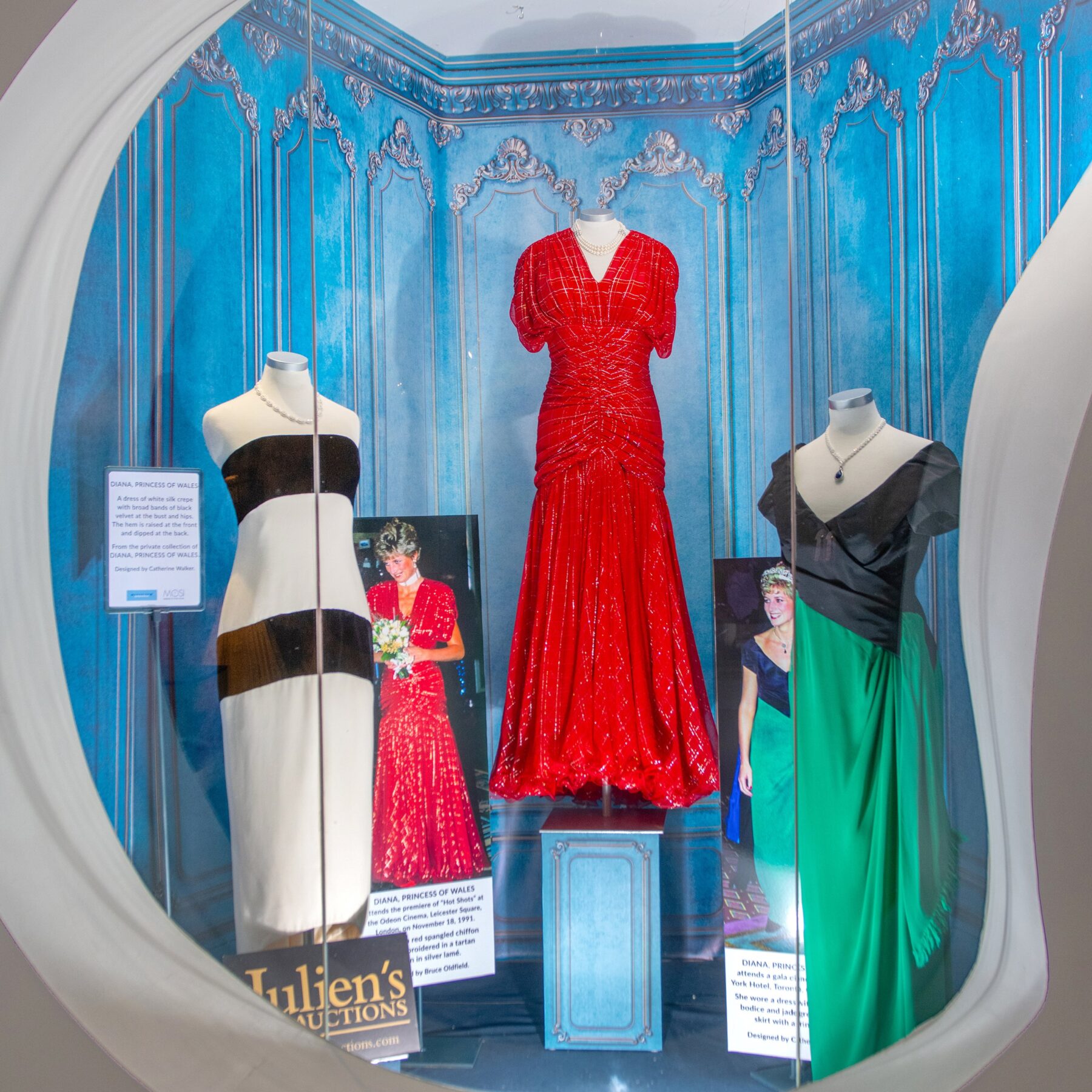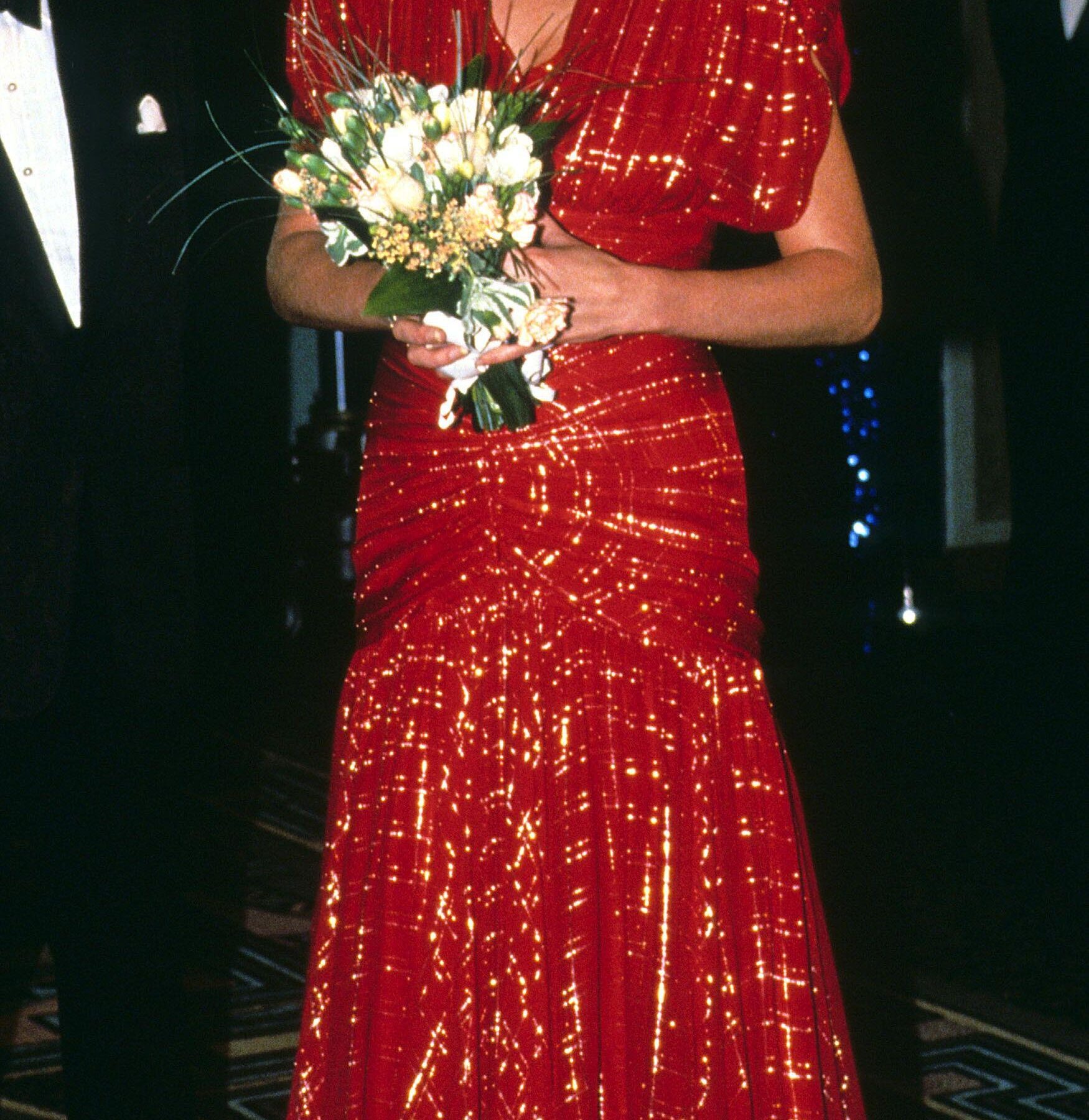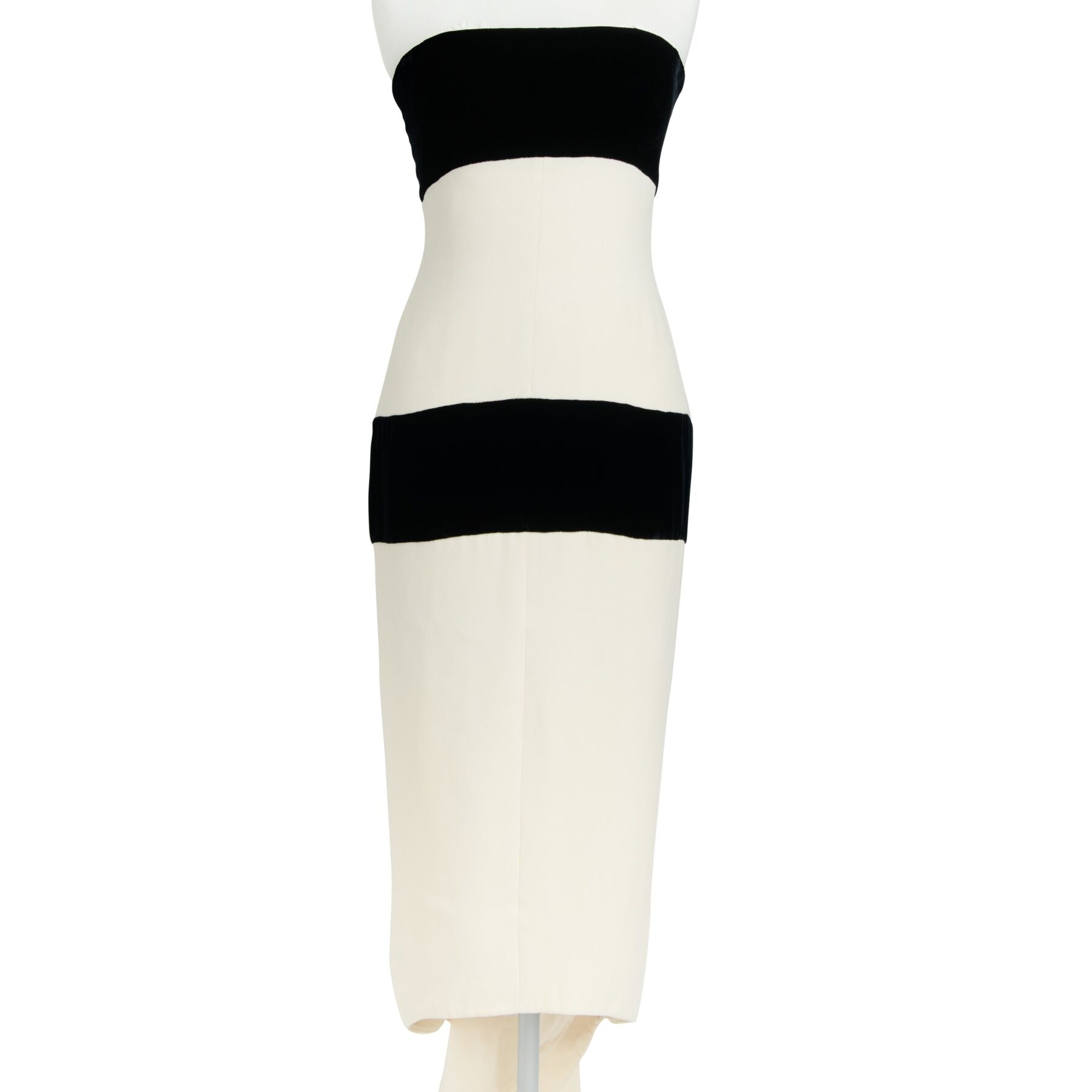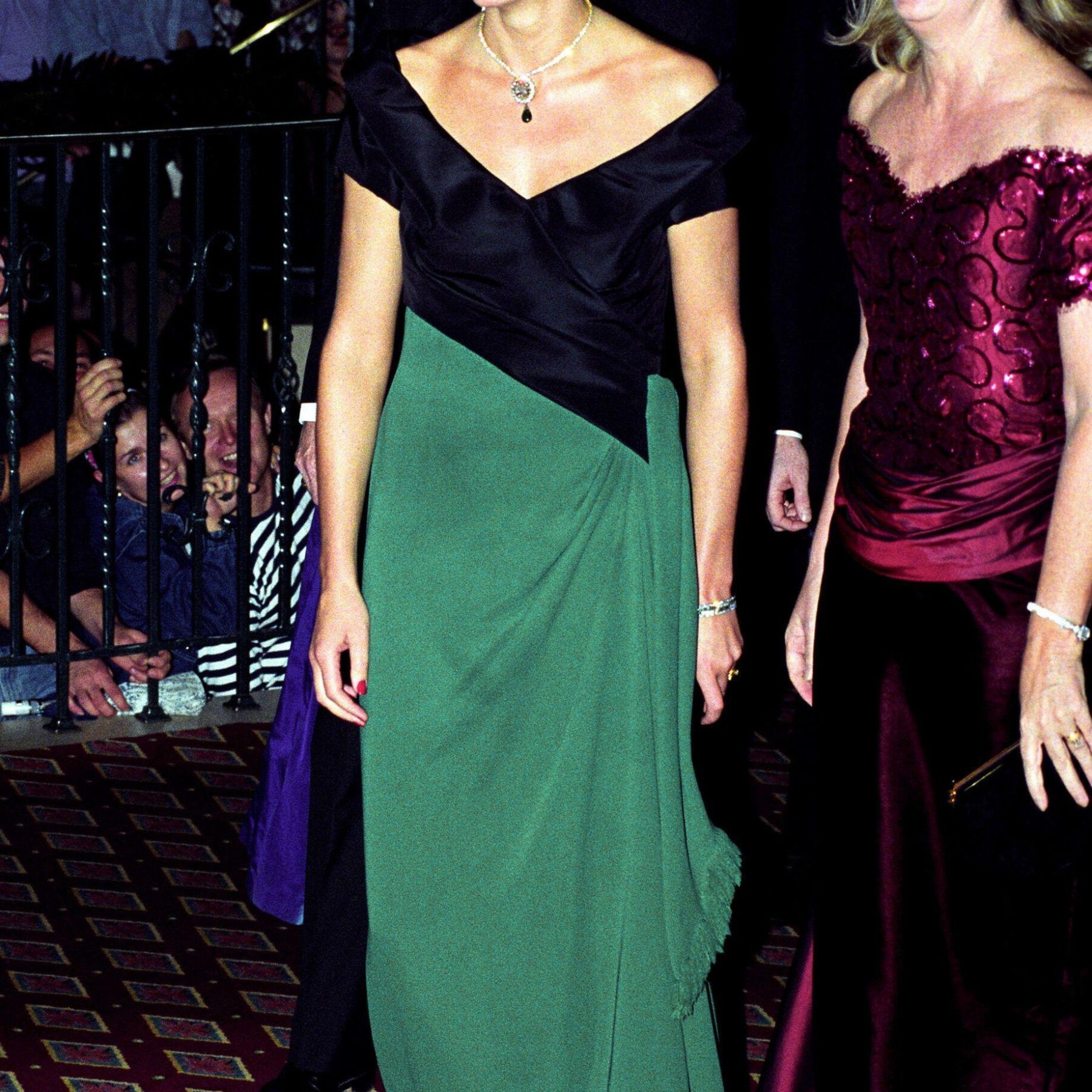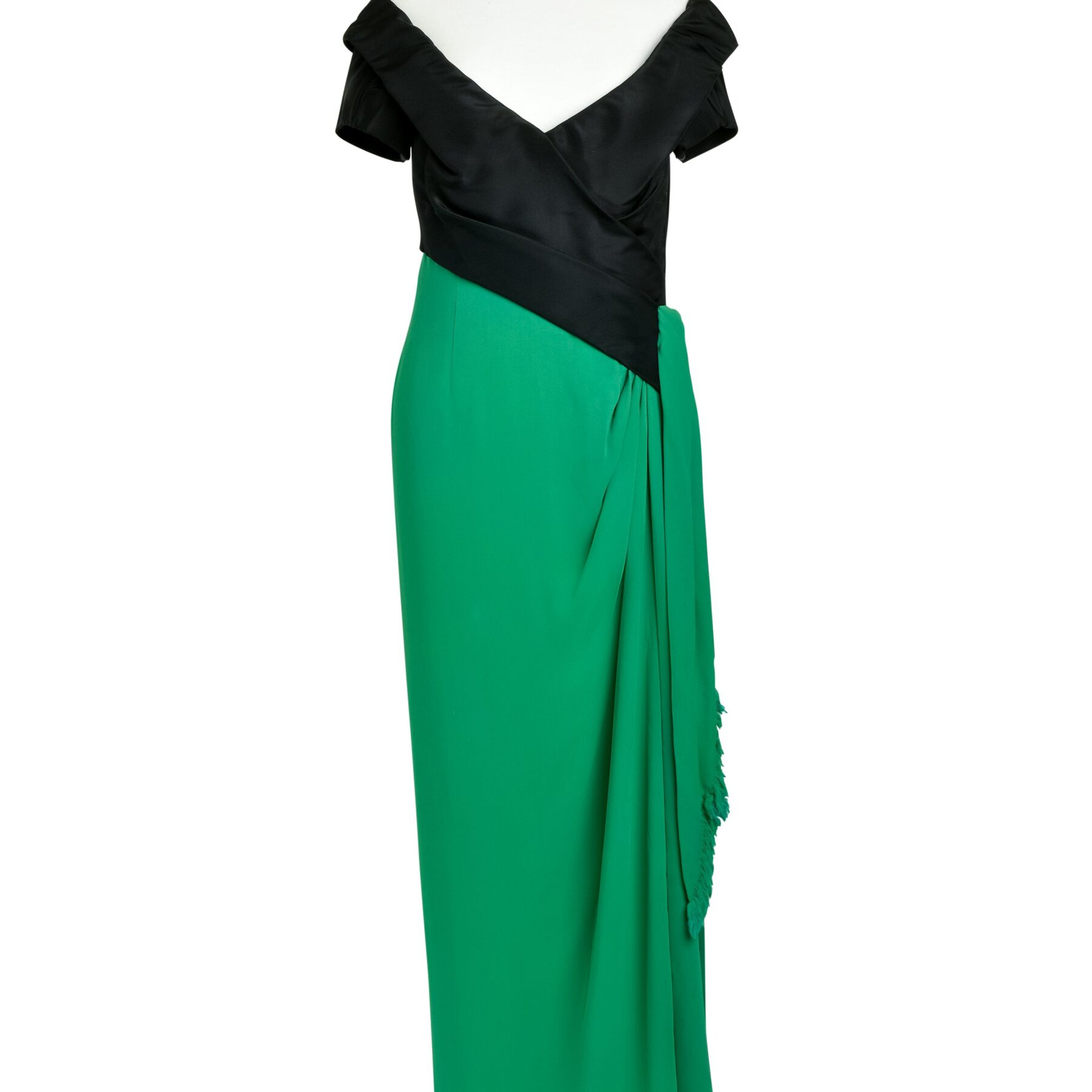Popular Searches
Princess Diana - New Exhibition
Princess Diana – New Exhibition
PAST EXHIBITION
‘Princess Diana – Fashion from the Wardrobe of The People’s Princess’
Free to enter Museum of Style Icons
CLOSED EXHIBITION
The Museum of Style Icons at Newbridge Silverware in Newbridge, Co. Kildare, together with the world-renowned auction house to the stars, Julien’s Auctions and Turner Classic Movies (TCM) Hollywood’s most revered purveyor of classic movies, will show three very important and rarely seen garments at an exhibition dedicated to the style of Princess Diana which opens to the public on May 5th. The garments will be displayed as part of a new exhibition called ‘Princess Diana – Fashion from the Wardrobe of The People’s Princess’ before heading to Julien’s and TCM’s two day event “LEGENDS,” taking place live August 26th and August 27th in Beverly Hills and online at julienslive.com
These three Princess Diana owned and worn garments were last seen in public when they were auctioned by Christie’s in 1997.
This exquisite piece among the garments up for auction is a breathtaking scarlet red silk gown designed by the renowned British fashion designer, Bruce Oldfield. Princess Diana donned this magnificent creation when she attended the star-studded film premiere of the action-comedy movie Hot Shots at the iconic Odeon Leicester Square in London, back in November of 1991.
Her presence at the event was further elevated by the company of President Arpad Goncz of Hungary and his wife, Zsusza Goncz, who joined her for the evening. The gown itself is a testament to Bruce Oldfield’s mastery of design and craftsmanship, featuring a gracefully draped short sleeve bodice that accentuates the wearer’s upper body.
The gown’s design also incorporates expert ruching around the waist and hips, providing a slender and form-fitting silhouette that effortlessly complements the wearer’s figure. To add a touch of regal sophistication, an all-over lamé tartan motif has been incorporated into the gown, giving it a unique and striking visual appeal.
Julien’s Auctions, a world-renowned auction house that specializes in high-profile celebrity memorabilia, has been entrusted with the sale of this iconic piece of fashion history. They have estimated the value of the gown to be within the range of $200,000 to $400,000, a testament to its significance in the world of fashion and its connection to the beloved Princess Diana. The auction is sure to attract a great deal of interest from collectors and enthusiasts alike, all vying for a chance to own a piece of royal fashion history.
There are also two Catherine Walker dresses, an English designer whose designs were much loved by Princess Diana and whose designs are still worn by many of the royals today including Kate Middleton. In fact, Catherine Walker created garments for Princess Diana for 16 years and indeed, sadly, the black cocktail dress that she was laid to rest in.
The first of the two exquisite Catherine Walker garments on display is an elegant and timeless black and white strapless gown, which was once worn by Princess Diana to a private function. Showcasing the designer’s eye for sophistication, this striking dress embodies an air of grace and poise that has long been associated with the late princess.
The gown, which carries an auction estimate of $60,000 to $80,000, is masterfully crafted from luxurious white silk crepe, adorned with bold bands of sumptuous black silk velvet. The bands elegantly accentuate the dress, providing contrast and depth to the overall design. The gown’s graduated hemline lends a modern touch to the classic black and white color scheme, while the silk lining ensures that the wearer experiences unrivaled comfort and a perfect fit.
This captivating piece of fashion history stands as a testament to Catherine Walker’s artistry and ability to create garments that seamlessly blend style and sophistication. As it goes on display, the gown is expected to draw considerable attention from fashion aficionados and collectors who appreciate the iconic status of Princess Diana and her enduring impact on the world of fashion.
The second captivating Catherine Walker garment to be displayed is a stunning evening gown that Princess Diana wore to a gala dinner at the prestigious Royal York Hotel in Toronto in 1986. This exquisite creation captures the essence of the late princess’s timeless elegance and impeccable sense of style.
The gown, which carries an auction estimate of $100,000 to $200,000, features a form-fitting black faille bodice that gracefully hugs the wearer’s figure. The décolleté neckline adds an air of allure and sophistication, while the off-the-shoulder short sleeves provide a delicate touch of femininity. The bodice’s elegant design is further complemented by a lavish draped jade silk skirt, which introduces a rich and vibrant color to the ensemble.
The skirt also features a stylish fringed sash that effortlessly cinches the waist and a daring side slit that adds a hint of modernity to the overall look. This breathtaking gown exemplifies Catherine Walker’s exceptional skill as a designer, creating garments that not only accentuate the wearer’s beauty but also reflect their unique personality and poise.
As this stunning piece goes on display, it is sure to draw admiration from fashion enthusiasts and collectors alike, serving as a reminder of Princess Diana’s enduring influence on the world of fashion and her extraordinary legacy as a style icon.
The three visiting garments will be shown alongside the Museum of Style Icon’s permanent Princess Diana exhibits which also include the famous pale pink Emanuel blouse Diana famously wore in her engagement portrait by Lord Snowdon in 1981. The photograph of a young, Diana wearing the blouse was originally commissioned as part of a Vogue feature on ‘upcoming beauty’. It is reported that Diana walked into the shoot and headed straight for the garment with its distinctive satin neck ribbon. The designers of the piece were then the little-known designers, husband and wife design duo, David and Elizabeth Emanuel. Fortuitously for Vogue — and the Emanuel’s — the timing of the publication coincided with the announcement of Lady Diana Spencer’s engagement to the Prince of Wales. The photograph of Lady Diana wearing the blouse with her clear blue eyes demurely looking at the camera depicted the very essence of innocence and romanticism. It was the first official portrait of Lady Diana, the future Princess of Wales and in many ways, marked the beginning of Diana’s fashion evolution.
In 1981, Elizabeth Emanuel, together with her husband, David was chosen to design the wedding dress of Lady Diana Spencer for her wedding to Charles, Prince of Wales. This was a huge undertaking at the time as the Princess was one of the most photographed, if not the most photographed woman in the world. In an age before Instagram and social media the allure and style of Princess Diana still made its way across the world with every outfit she wore being scrutinised and admired. Naturally then, the wedding was a huge affair and was televised with an estimated 700 million people worldwide tuning in to see ‘the dress’. Of course, it didn’t disappoint – it was made of ivory silk, pure taffeta and incorporated antique lace, 10,000 pearls and had a 25ft train.
The exhibition at Newbridge Silverware includes the final calico toile for the royal wedding gown and a replacement veil. A toile is a dressmaker’s equivalent of a working document, this toile, which was made by the Emanuel’s was a pre-cursor to Diana’s actual wedding dress, in other words, the final fitting toile of her wedding gown which was later made in silk and features the same details, including the flounced cuffs and trained skirt. The designers made this toile to allow them to adjust the sizing. Numerous bodice changes had to be made by David and Elizabeth Emanuel as Diana continued to lose weight in the weeks leading up to the wedding day. “Diana, like many nervous brides, must have lost about a stone and a half in weight during the run-up to the wedding,” said Elizabeth Emanuel. “The actual gown was only made up in silk based on this final toile at the last possible moment to ensure the most accurate fit and as there was a limited amount of the specially woven silk available.”
After the dress was made, some silk was left over and the Emanuel’s made a miniature copy of the royal wedding gown and bridesmaid dresses (similar to the ones given to Princess Diana by Elizabeth Emanuel and David Emanuel in 1981). The miniatures were made at a scale of 1/8th of the original dress and were created using cut-offs from the original bridal silk and lace, mounted onto miniature mannequins. The miniatures are also on display at Newbridge Silverware and feature mini versions of the three bridesmaid dresses similar to those worn by India Hicks, Clementine Hambro and Lady Sarah Armstrong Jones.
The so called ‘India Dress’ is also on display at the museum and is a Catherine Walker, Mughal-inspired lavishly embroidered pink silk evening gown and bolero, made for the state visit to India, in February 1992. It was during the state visit to India that Diana was famously photographed sitting alone at the Taj Mahal – the monument to lost love, which caused a good deal of comment and speculation in the press at the time. Her official separation from Prince Charles was to be announced in December of the same year. The Princess was photographed wearing this gown by Lord Snowdon in 1997 and is one of the most lavish of all her gowns. Labelled ‘Catherine Walker, London’, the sleeveless gown with deep scooped neckline and long princess-line bodice is delicately embroidered to the dropped waistline. It has three dimensional exotic blooms in looped and satin stitched silk, layered pink sequins, centred by amber, green and pink crystal beads and is scattered with small white floral shaped sequins against a green iridescent sequined background with gold chain stitched leaves. The bolero jacket is embroidered front and back and is lined with ivory satin. The plain silk cuffs each have three large buttons inset with emerald and pink rhinestones.
‘Princess Diana – Fashion from the Wardrobe of The People’s Princess’ opens to the public on the 5th of May and runs throughout the summer at the free to enter Museum of Style Icons at Newbridge Silverware. The three garments will be sold by Julien’s Auctions on Saturday, August 26th and Sunday, August 27th in Beverly Hills. For more info see www.juliensauctions.com
Diana Frances Spencer was born on July 1st, 1961, the fourth of five children born to John Spencer, Viscount of Althorp and his first wife Frances. The Spencer family had long had ties to the British Royal Family with both of Diana’s grandmothers having served as ladies-in-waiting to the Queen Mother and, growing up in Park House – situated on the Sandringham Estate – a young Diana would play with Princes Andrew and Edward. However, Diana described her childhood as “very unhappy” and “very unstable, the whole thing”. She became Lady Diana after her father inherited the title of Earl Spencer in 1975, at which point the entire family moved from Park House to a stately home at Althorp.
Diana first met Prince Charles, the Queen’s eldest son and heir, when she was sixteen – he was, at the time, dating her older sister, Sarah. However, by the summer of 1980, Charles had taken a serious interest in Diana. Their relationship progressed quickly, and she was invited for a sailing weekend aboard the royal yacht Britannia, and to Balmoral to meet the Royal Family. Having been well received by the Queen, Prince Philip and the Queen Mother, Charles continued to court Diana in London and on February 6th, 1981 they were engaged to be married.
The press and public fell in love with Diana from the moment she was introduced as Prince Charles’ girlfriend. However, the attention she garnered, from an at times volatile media, only intensified following their engagement. She was followed everywhere, and every detail of her life was scrutinised.
One aspect of Diana’s life that the media paid great attention to was her fashion sense and it seemed at times that Diana used her clothing to communicate with those around her. She developed a very glamorous regal style for trips overseas, often paying homage to her hosts. For a state visit to India in February 1992 Catherine Walker designed a Mughal inspired lavishly embroidered, pink slubbed silk evening gown and bolero dress. Great care was taken when choosing the colours of the needlework for the elaborate embroidery – it needed to be exuberant to reflect the country of her visit. The long line of the bodice with the dropped waistline, combined with the short boxy shape of the bolero helped to emphasise the height and slimness of the Princess – a technique Catherine Walker often employed in clothes she made for the Princess.
Diana also had a sense for how clothing would enhance her physical presence. She would purposely choose cheerful, colourful clothes to convey approachability and warmth. She was known to wear velvet outfits when visiting blind people so that when they reached out to touch her, they would feel warmth and softness. Eleri Lynn, curator of “Diana: Her Fashion Story,” an exhibit currently running at Kensington Palace says “She didn’t wear gloves because she liked to hold people’s hands. She would sometimes wear chunky jewellery so that children could play with it, and she never wore hats to children’s hospitals after a while, because she said you couldn’t cuddle a child in a hat.”
When it came to style, Diana’s transformation from the bashful “Sloane Ranger” who earned the epithet “Shy Di”, to the elegant, regal woman whose confident appearance at official engagements made her the most-photographed women in the world, was almost Cinderella-esque.
“She is stepping into that same sort of space as an Audrey Hepburn or Jackie Kennedy,” said Lynn, “a fashion icon whose style is so emulated and so loved, really.”
Princess Diana’s India dress, engagement blouse and “Revenge Dress” are all on permanent display at Newbridge Silverware’s Museum of Style Icons.
